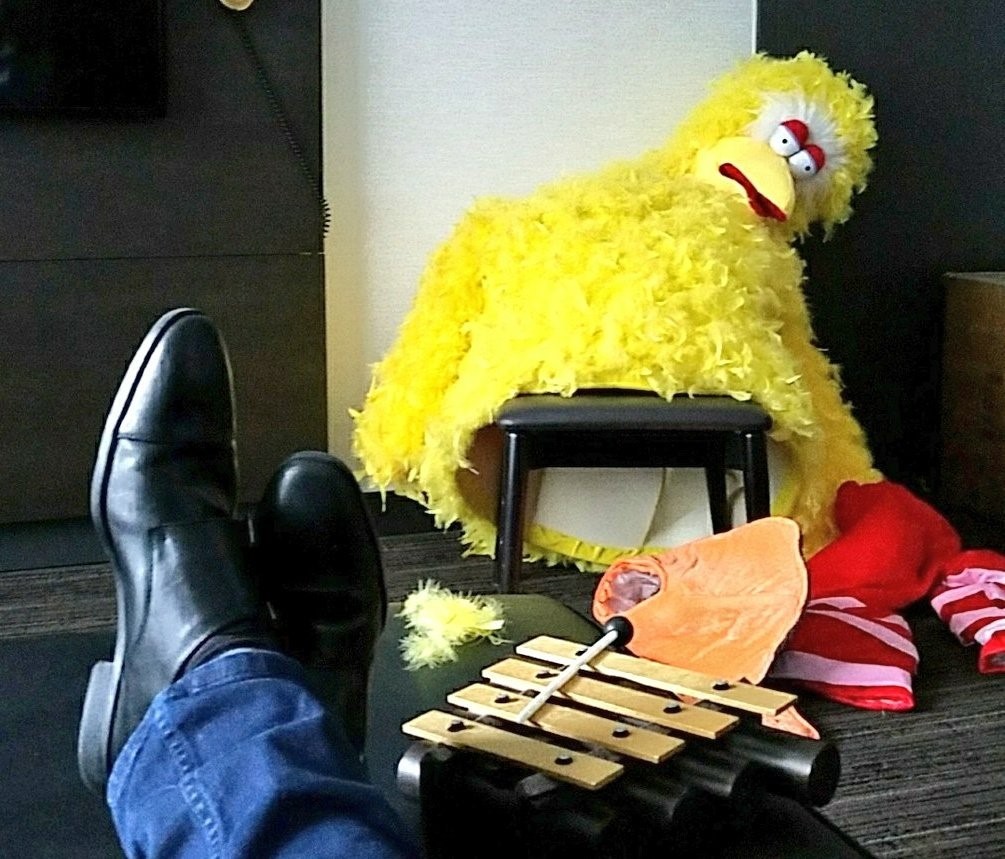Editor’s note: Annie Pettit is a marketing research methodologist and author of People Aren’t Robots: A practical guide to the psychology and technique of questionnaire design, and 7 Strategies and 10 Tactics to Become a Thought Leader.
Last week was the first time I've attended a Quirk's event so I was eager to dive into the formal educational and networking sessions, as well as discover the unexpected treats. Needless to say, treats were abundant! Big Bird and Curious George posed for photos with their fans and manned booths for tired exhibitors. InsideHeads and Research Now treated us to caricatures of faces and butts (yes, butts). Zeldis Research brought a stunning balloon artist. Mark Michelson led a fierce rock band of marketing research musicians. But let’s focus on the main course.
One of the great things about having many simultaneous tracks is that you can create a personalized experience that meets your specific needs. The track I created for myself incorporated sessions covering innovative technologies like artificial intelligence, virtual reality, social media listening and qualitative research. But the theme represented was not technical at all: how to humanize the unique people behind the data.
It’s the snackable insights that always catch my attention so with that in mind, here are a few that intrigued me the most:
Feel people. Well, not literally. But rather than simply listening to people, try to really get into their minds and feel their emotions and pain points. This might seem like old news to qualitative researchers, but all of us – quantitative specialists included – need to work harder on this. We need to step outside of our roles as scientists and feel the human side of the experience.
Consumers vs. humans. In the same vein, we need to remember that there is a big difference between consumers and humans. A subset of consumers may be young, healthy and not currently in need of any health care but, as human beings, those same young adults are also single parents overwhelmed with conflicting responsibilities and health care will inevitably become a necessity.
Go long. Just like toddlers, families can get along for a couple hours when guests come over. However, we all know it’s impossible to behave lovingly in front of guests for 48 hours straight. In other words, consider whether the time frames you’re using for research are long enough for people to let their guard down and become their real selves.
Ask different questions. Every researcher has their own traditional ways of asking questions and it’s rare that we stray from our standards. Well, maybe it’s about time we tried something new. If you usually ask people what they did yesterday, try asking what they will do tomorrow, what they used to do a year ago, what they would never do or what they wish they would do. Change one of the standard components of your questions and see whether you end up with unusually revealing data.
Embrace chaotic videos. When asked to video themselves explaining why they like or dislike a product, people often try to find a quiet place like a closet or a bathroom to eliminate noise and distractions. But those distractions are often part of the experience. Ask people to stay in the moment, stay in the chaos of the kitchen when they talk about breakfast cereal, stay within the noise of the Super Bowl on TV when they discuss chips and salsa. Record the chaos that is reality, not a scrubbed, false reality.
Recruit quirky people. This is an odd but smart recommendation! So much of the recruitment we do is for normal, average people who fit perfectly into census target cells. Think about whether your next project would benefit from recruiting extreme people such as the lowest frequency users, or the high frequency users who don’t seem to need the category.
Multi-mode has arrived. It used to be that all the cool, innovative research presentations were geared at persuading us to give multi-method techniques a try. Last week, many presentations described, in passing, using two or more techniques. It wasn’t the point of the presentation but simply a basic statement. Every one of us has a favorite technique but it seems we’ve finally realized our favorite technique cannot measure everything. Now this is how great research works!
For two solid days, I enjoyed a fabulous variety of insights. I hope you did too. That’s a wrap!

